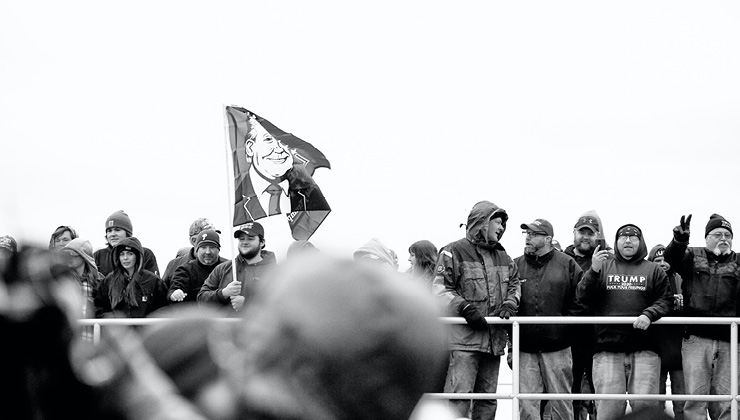Rose Khan looks at how the media shapes our understanding of events, interpretations and attitudes, and addresses the media’s responsibility to present a more accurate representation of the experiences of conflict-related sexual violence in order to challenge deeply entrenched gender patterns.
Media coverage of conflict-related sexual violence (CRSV) focuses on female victims of sexual and gender-based violence, drawing on narrow depictions and gender stereotypes to provoke empathy and horror, galvanising calls for action. However, they provide an incomplete picture of the everyday experiences of war and conflict, reinforcing the narrative that sexual violence in conflict is a crime committed by men against women. Although international organisations and the academic community are aware of the diversity of experiences of those victimised by CRSV, this has not been translated into media coverage.
Media representations and social norms
The media portrayal of conflict-related sexual violence can shape public perceptions, social norms and attitudes. In some cases it can supersede normal institutions of policy making. With this is mind, the media is essential to changing narratives, discourses and the way in which we conceptualise facts. It socially constructs reality, shaping and reproducing norms about gender and sexuality. We construct our reality based on our observations and experiences; the media presents us with many of those experiences, observations, interpretations and attitudes.
The widespread access to information disseminated by the media has the potential to impact a broad range of attitudes and behaviours. For example, a study in partnership with UNESCO conducted in Quialana, Mexico of a radio programme intervention designed to challenge gender roles, attitudes and norms around violence against women found that the social mechanism, that is information disseminated publicly via mass media or public meetings, had a stronger impact than the individual mechanism, whereby individuals are provided with new information on an individual basis, e.g. through leaflets. The social mechanism caused the individual to reject violence against women because others rejected it too. It informs individuals about what others learn and encourages coordination, by influencing perceptions of collective change.
This example shows that the media can impact public perception through the visibility and coverage given to a particular topic. Stories covered gain legitimacy and deem what is noteworthy and deserving of public attention. However, media outlets have limited space to inform, leaving the reader to complete the picture with existing knowledge. This tends to be based on gendered stereotypes about the role men, women and children play in conflict, while perpetuating familiar notions of what sexual violence is, who perpetrates it and who is victimised by it.
Media stories
The kidnapping of Nigerian students by the insurgent group Boko Haram garnered worldwide media attention. The media coverage of the kidnapping featured gendered accounts of the victims and perpetrators with a particular focus on the gendered risks that the victims faced if not released from their captors. In one such piece featured in Ms. magazine, the author emphasises the sexual victimisation of the students, assuming that because they had been kidnapped their abduction was bound to involve sexual abuse. Furthermore, in Buzzfeed World, Dr Valerie Obote, the national president of the Women’s Medical Association in Nigeria was reported as saying “the first thing those men will be thinking of is sexual violence.” Gendering also occurred when those kidnapped were referred to as “girls” or “school girls”, despite some of them being as old as eighteen.
The use of this framing by the media calls attention to the behaviour of Boko Haram, which is well-known for its systematic targeting of women and girls, but it also conjures up stereotypes about the age and gender of those kidnapped. The students were portrayed as the targets of violence because they were girls. They were defined as a group by their vulnerability to sexual assault and need for protection, which is associated to the idea of femininity and infantilism. Boys were also kidnapped but referred to as boy soldiers and not victims of gender-based violence.
Media outlets have limited space to inform, leaving the reader to complete the picture with existing knowledge. This tends to be based on gendered stereotypes about the role men, women and children play in conflict
An examination of media narratives of the conflict in the former Yugoslavia found that the media portrayal of sexual violence was skewed toward gender stereotypes of perpetrators and victims. On both sides of the conflict the rape of women was emphasised in the media. In some cases aligning the victimisation of women with that of the group, state and nation. Moreover, there was an excessive presence of victimised female bodies and a near invisibility of male victimised bodies. The influence of such representational practices impacts the reproduction of traditional gender roles. The over-representation of women as victims refused them agency and restricted them to the passive role of the victim, while denying men their vulnerability and reinforcing the narrative that men victimise women.
New America’s Better Life Lab analysis into media representations of women in conflict zones (Iraq, Syria and South Sudan) found that across all publications studied (the Wall Street Post, the New York Times and the Wall street Journal) women are often represented as casualties of sexual violence, injury or death. Sixty per cent of the Wall Street Journal articles paired women with children.
Women are constructed as perpetual victims; individuals like children that are vulnerable to attack and should be protected at all costs. South Sudanese women were predominantly represented as victims of sexual violence. Scant attention was given to other challenges that these women encounter, such as the lack of basic services, illiteracy and land and property issues. Only 5 per cent of articles featured women as activists, protestors or politicians and none included women in peacekeeping roles. The findings concluded that despite their participation in formal and informal politics and peace efforts, conflict reporting frequently portrayed women as helpless victims of violence and conflict.
Female perpetrators and male victims
Coverage of conflict and humanitarian crises often shows women akin to children as passive, without agency and in need of protection. To view them as capable of violence would subvert the logic of gender norms that define masculinity and femininity. The idea of male victims transforms our understanding of the gendered structure of society, especially that of the militarised male. However, women and girls like men and boys are capable of committing acts of violence in times of conflict, including sexual violence against male and female victims. Several studies have identified girls and women as the perpetrators and co-perpetrators of such violence.
A study on the patterns of sexual violence in post-conflict Liberia found that 32.6 per cent of male former combatants and 42.3 per cent of female former combatants experienced sexual violence, by both male and female perpetrators, during the conflict. In a study involving 593 women and 405 men in the Democratic Republic of the Congo, researchers reported that 41.1 per cent of female survivors and 10 per cent of male survivors of sexual violence stated that the perpetrator was female. In Sierra Leone around 20 per cent of all fighters were female. In becoming combatants, women and girls often became perpetrators of extreme violence and atrocities. In the former Yugoslavia, a female commander of a women’s detention camp forced female prisoners to the front line for soldiers to rape them.
Coverage of conflict and humanitarian crises often shows women akin to children as passive, without agency and in need of protection. To view them as capable of violence would subvert the logic of gender norms that define masculinity and femininity.
The prisoner abuse scandal in Abu Ghraib prison drew widespread public attention and created a media crisis for the U.S. military. Media outlets broadcast photographs of Iraqi prisoners being sexually assaulted by US soldiers, including female soldiers. At the forefront of the scandal was Lynndie England. Media constructions framed her as the main perpetrator of the mistreatment and torture of prisoners, deflecting attention away from the U.S. military.
She was placed at the centre of the controversy, captured standing in front of a pyramid of naked prisoners, holding a naked prisoner on a leash, and pointing to the penis of a man forced to masturbate. In media publications her behaviour was characterised as deviant, or many were incredulous that she willingly participated in the abuse. Media discourse and imagery of England either vilified her as a monster and cast her as dishonourable and sexually deviant. Her perceived apathy only intensifying the media fascination with her, while yet other pieces unable to accept her as the perpetrator of such crimes regarded her as a psychological abnormality unable to tell the difference between right and wrong.
Others focused on the exploitation of England by her male military superiors reinforcing her femininity and subsequent incapacity to commit such violence. She was consistently depicted as “petite,” “small,” ”waif-like,” and infantilised as “young girl,” “poster child,” and “poster girl.” The story was significant because it featured a female protagonist of sexual violence within a male profession and called into question the role of women in the U.S. military.
Although these accounts affirm a higher proportion of female victims when compared to men and boys, they contradict widespread media reporting that conflict-related sexual violence is something men do to women. Sexual violence is often framed in such a way that it is discursively impossible to encounter stories about male victims or female perpetrators. When it does occur they are often portrayed as an unusual or exceptional phenomenon.
The pervasive use of feminine and masculine gender stereotypes comes to represent and shape how readers perceive conflict and humanitarian disaster more generally. These stereotypes feed into and perpetuate deeply entrenched gender narratives of global politics. Within this climate, the idea of female perpetrators and male victims of sexual violence becomes difficult to imagine, as they are inconsistent with the overarching gender narrative of war and conflict.
The media has a responsibility in presenting a more accurate representation of the experiences of conflict-related sexual violence and challenging deeply entrenched gender patterns. By reframing its narrative, it could disrupt the dominant discourse and encourage a more nuanced and conflict-specific approach into the global problem of conflict-related sexual violence, to become an effective tool in building relationships, fostering greater understanding between differing groups and be a space for the voices of those marginalised.
The views, thoughts and opinions expressed in this blog post are those of the author(s) only, and do not necessarily reflect LSE’s or those of the LSE Centre for Women, Peace and Security.





